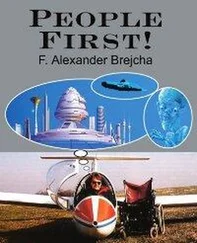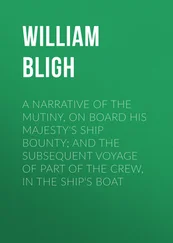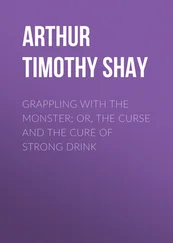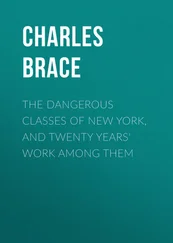Mattias Berg - The Carrier
Здесь есть возможность читать онлайн «Mattias Berg - The Carrier» весь текст электронной книги совершенно бесплатно (целиком полную версию без сокращений). В некоторых случаях можно слушать аудио, скачать через торрент в формате fb2 и присутствует краткое содержание. Город: London, Год выпуска: 2019, ISBN: 2019, Издательство: MacLehose Press, Жанр: Триллер, на английском языке. Описание произведения, (предисловие) а так же отзывы посетителей доступны на портале библиотеки ЛибКат.
- Название:The Carrier
- Автор:
- Издательство:MacLehose Press
- Жанр:
- Год:2019
- Город:London
- ISBN:978-0-85705-788-4
- Рейтинг книги:4 / 5. Голосов: 1
-
Избранное:Добавить в избранное
- Отзывы:
-
Ваша оценка:
- 80
- 1
- 2
- 3
- 4
- 5
The Carrier: краткое содержание, описание и аннотация
Предлагаем к чтению аннотацию, описание, краткое содержание или предисловие (зависит от того, что написал сам автор книги «The Carrier»). Если вы не нашли необходимую информацию о книге — напишите в комментариях, мы постараемся отыскать её.
The Carrier — читать онлайн бесплатно полную книгу (весь текст) целиком
Ниже представлен текст книги, разбитый по страницам. Система сохранения места последней прочитанной страницы, позволяет с удобством читать онлайн бесплатно книгу «The Carrier», без необходимости каждый раз заново искать на чём Вы остановились. Поставьте закладку, и сможете в любой момент перейти на страницу, на которой закончили чтение.
Интервал:
Закладка:
I didn’t give an inch, managing to hide my own curiosity. Let him keep going in his own good time.
“Because there were traces of californium both inside the restroom and in the fallout. Not only the usual microscopic residue you’d find after a nuclear explosion, but significant amounts. As if the entire charge had consisted of isotope Cf-251 or perhaps even Cf-252.”
“Californium?” I said out loud.
Ingrid started.
“ Californium ?” she repeated.
I looked around at all the other passengers standing among the bar tables, to see whether any of them had overheard what we had said, that word. None of them had reacted at all. Edelweiss waited before continuing. Maybe he had heard Ingrid in the background, was waiting to hear if she would have anything more to say.
Then he swallowed audibly, that curious gurgling sound, and took up the thread:
“Otherwise it’s relatively clear to us what happened. The surveillance cameras inside the restrooms have a form of black box which makes it possible for us to reconstruct the course of events, second by second, freezing the picture and spooling backward and forward, taking advantage of the blessings of modern technology—and that’s what we had to do to get a better understanding. At first it seemed like some kind of complex mating ritual. In the end, though, there was not much left of either of them. I think you can probably imagine it all, broadly speaking, my dearest Erasmus.”
I shut my eyes, pushed away the thoughts. For all those years Zafirah had tried to convince me of the blessings of ultra-violence, get me to discover its special power and cleansing effect, the catharsis of brutality. Said that it was her only relief after her mother had simply left them in their little village in Bahrain to join the mujahideen fighting the Russians in Afghanistan. She would sit there as a little girl with her father all night, watching boxing galas on some foreign television channel, leaning toward him in their wordless grief.
But still I never succumbed to the temptation: had always regarded brute force as a means and not an end. So I said nothing. Just waited for the last piece of information, even though I already knew.
“But finally they managed to consummate the act, the thing which mankind is, after all, created to do. And this resulted in his last little futility triggering the mighty apparatus she was carrying. A neat little piece of construction, I have to say, evidently with the world’s most expensive element as its active substance. The going rate for a gram of californium is upward of $80 million. I had to check that with our experts.”
A short pause.
“But as one of them added: ‘However one’s supposed to get a hold of that much!’”
6.02
On the flight to Palermo I once again took my dissertation out of the pocket of my combat pants. I found the part dealing with californium straight away. Here too my style was peculiarly essayistic, light years from what was current in academic circles. I still could not quite fathom how it had managed to pass the Bulgarian examiner’s sullen filtering.
The heading to Chapter Three was “THE ELUSIVE TRAIL OF THE TRANSURANIC ELEMENTS”. I began to read, was drawn in, pulled back in time.
People had been searching for them for such a long time, predicted their possible existence, the world of science buzzed with rumors. In 1935 Meitner and Hahn had been given joint responsibility for the so-called “Transuranium Project” in Berlin.
From a theoretical point of view, “transuranic elements” is only a generic term for elements which are heavier than uranium, that is to say with more protons in their nucleus, and an atomic number higher than 92. But in practice they both were and are so much more than that. Trans-uranic elements are by nature unstable, seldom exist for more than fractions of a second and are also called “synthetic” elements because the only transuranium which exists naturally on earth—and what is more, in extremely small volumes—is pluto-nium. Other than in a laboratory environment, the others have only been encountered in nuclear reactors or after atmospheric tests of nuclear weapons.
What came to be called neptunium and plutonium carried also for a long time the mysterious designations Element 93 and Element 94 because of their estimated atomic numbers. In other words, it was known that they ought to exist—all theoretical calculations indicated as much—but under conditions prevailing at the time it was in practice still not possible to produce any of the transuranic elements.
With the war and in due course the Manhattan Project came both the possibility and the driving force. Only then was it possible to generate sufficient impetus, energy and motivation to produce the new elements, perform the whole “transmutation” from one element to another. Neptunium was created in 1940, followed soon after by plutonium. The substance which together with uranium made the atomic bomb possible.
Yet in the end it was not Meitner and Hahn who discovered plutonium, despite the fact that they had worked with transuranic elements for longer than most. Instead that honor fell to the Swedish American Glenn Seaborg. And not only for plutonium, a substance which Seaborg was later responsible for enriching to weapons grade at Los Alamos, but also a number of other new elements, in close and fateful succession.
Curium and americium were created in 1944 and 1945, although without practical implications for the outcome of the war. With the arrival of peace, the short window between hot and cold war, Seaborg became professor of chemistry at the University of California, Berkeley. At the start of the 1950s his team there produced no fewer than five different transuranic elements in as many years. First berkelium and californium—named after their place of creation—and after that einsteinium, fermium and mendelevium.
The photograph on the facing page (Ill. 13) is a facsimile copy of an historic special issue of “Chemical & Engineering News”. There we see Seaborg and his collaborator Stanley Thompson beaming at a test tube filled with a glittering pale substance against a dark background. The caption underscores the significance of the discovery: “MAGICIANS. Scientists Thompson and Seaborg pose like ancient alchemists in 1948, just before the discovery of californium.”
In the pages of illustrations in the center of my dissertation there is another photograph of californium (Ill. 36). It shows a petri dish full to the brim with a silver substance. The original caption states that the container has a diameter of barely one millimeter. Not surprising, considering that californium is often seen as the world’s most expensive material. At the time of writing, its price is approximately $60 million per gramme.
In the following section (Chapter Six) I will consider more closely californium and its different uses. Not only as a “neutron cannon” for starting up nuclear reactors or creating further new elements, but also, for instance, in the treatment of cancer or to search for gold or oil.
In the same section I will also look in greater detail at certain of the more speculative theories about californium as an active component in a number of very small nuclear weapons. From backpack-sized atomic bombs to the much talked about, but never fully confirmed, nuclear pistol with bullets filled with californium.
But let me dwell a little longer here on researcher and Nobel Prize winner, Seaborg. In the pages which follow, there are more photographs of him. The first one (Ill. 14) shows Seaborg as if in motion, slightly out of focus, surrounded by students on his way into a lecture hall, on one of his many visits to Sweden. He came often to his beloved second homeland, as guest of honor at gatherings for Swedish Americans or to lecture on his area of expertise. It was certainly no disadvantage that this also allowed him to keep up his contacts with the Nobel committee. In 1951 he was awarded the prize, jointly with his colleague Edwin McMillan, for “their discoveries within the chemistry of the transuranic elements”.
Читать дальшеИнтервал:
Закладка:
Похожие книги на «The Carrier»
Представляем Вашему вниманию похожие книги на «The Carrier» списком для выбора. Мы отобрали схожую по названию и смыслу литературу в надежде предоставить читателям больше вариантов отыскать новые, интересные, ещё непрочитанные произведения.
Обсуждение, отзывы о книге «The Carrier» и просто собственные мнения читателей. Оставьте ваши комментарии, напишите, что Вы думаете о произведении, его смысле или главных героях. Укажите что конкретно понравилось, а что нет, и почему Вы так считаете.












